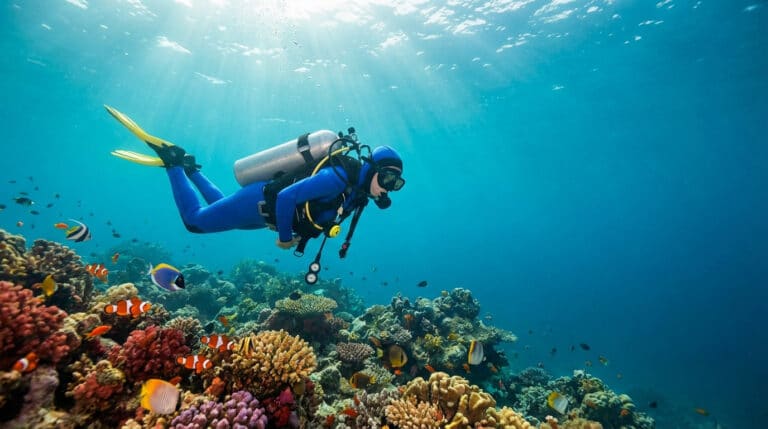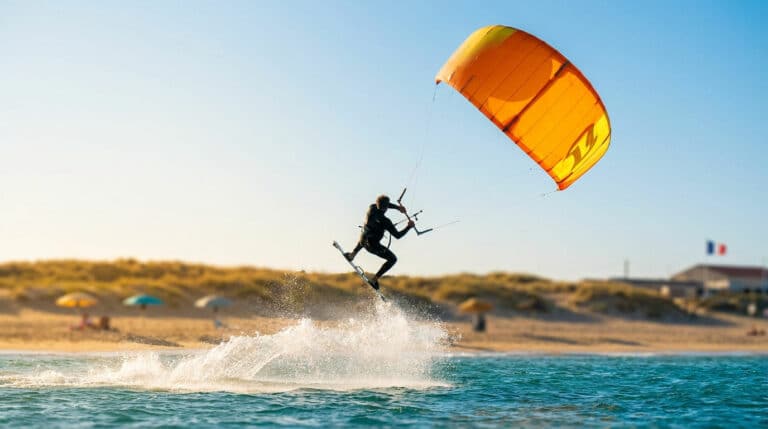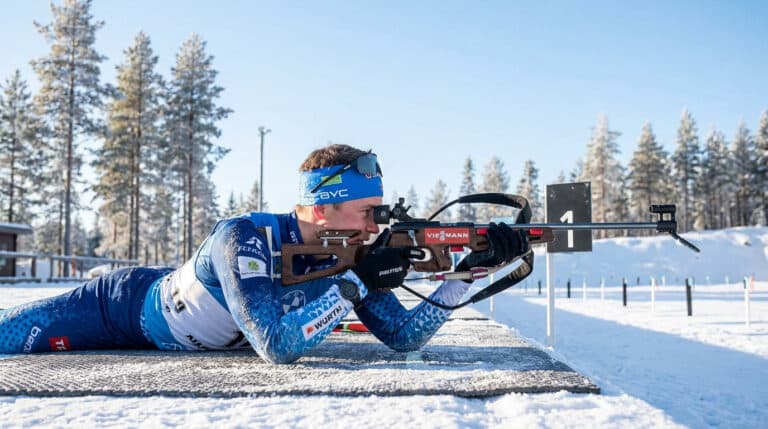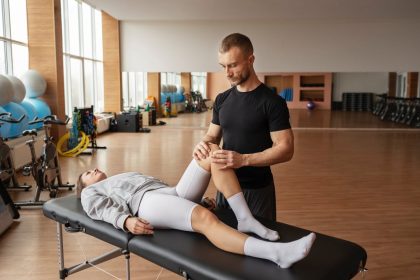Does outdoor sport seem reserved for seasoned athletes or limited to mountain hikes? Think again: whether you’re a mountain biker in the woods, a street workout enthusiast in the city, or curious about canoeing on a lake, the outdoors adapts to everyone. These activities strengthen your body through demanding terrain, boost your mood thanks to natural light, and offer an antidote to modern stress. Discover a variety of disciplines, from slacklining to trail running, and free yourself from clichés: there are no age limits or terrain boundaries, just a world to explore in all its forms.
What is an outdoor sport?
A practice beyond walls
An outdoor sport takes place outside, away from enclosed spaces. Its specificity: the influence of weather conditions, which change the experience. A mountain runner adapts to slippery trails, while an urban jogger enjoys stable paths but must deal with pollution. These variations make each session unique.
From nature to the urban environment
Outdoor sport is divided into two categories: nature activities (hiking, mountain biking, canoeing) and urban practices (street workout, skateboarding, rollerblading). Sports like running or cycling bridge both worlds, being practiced as much in forests as in cities. Parks, with their fitness modules, offer an accessible alternative to gyms.
Street Workout, born in Russia in the 1990s, embodies this hybridisation. Mixing calisthenics and acrobatics, it uses urban equipment (pull-up bars, benches) for free and open training. Popularised by figures like Hannibal For King, it transforms the city into a playground, blending strength training and solidarity. Skateboarding or parkour also reclaim urban spaces, turning everyday structures into training supports.
Improving mental health and reducing stress, these activities also strengthen social bonds. Outdoors, whether exploring mountains or city streets, they offer an endless playground for personal growth, accessible to everyone.
The countless benefits of outdoor sports
A stronger and healthier body
Outdoor sports strengthen the cardiovascular system, develop muscles, and help manage weight. Moderate sun exposure stimulates vitamin D synthesis, essential for bones and immunity. Athletes training outdoors reach an average level of 24.9 ng/mL of vitamin D, compared to 15.3 ng/mL for indoor athletes. Activities like hiking or mountain biking engage the legs, back, and balance, while open-water sports (swimming, canoeing) strengthen the arms and shoulders. Uneven terrain, such as trail paths, activates stabilising muscles rarely used indoors, improving proprioception. Climbing develops both strength and focus, engaging arms, legs, and core.
A calm mind and a positive mood
Walking in the forest or running in a park reduces stress by lowering cortisol levels within just 20 minutes of exposure. Fresh air releases endorphins, dopamine, and serotonin, improving mood and sleep thanks to natural light. Contact with varied environments (beaches, gardens) activates brain areas linked to relaxation through soothing sounds (waves, birdsong). Outdoor yoga reduces anxiety by 25% according to some studies, combining breathing exercises and a connection with nature. Nature also boosts creativity: research shows that forest walkers solve 50% more cognitive problems than urban dwellers.
A public health and social connection issue
With 30% of French children aged 6–10 inactive during the week, outdoor sport helps combat sedentary lifestyles. Intergenerational urban fitness areas (street workout, health trails) encourage interaction between generations. In France, the 2019–2024 National Sport and Health Strategy relies on these practices to strengthen social cohesion and prevent diseases linked to lack of activity. Initiatives like “moving parks” (combining city stadiums and fitness areas) attract diverse audiences, generating social interactions between neighbours. According to the WHO, such practices reduce hospitalisations for cardiovascular issues by 15% in equipped areas. In urban areas, 65% of users of these spaces report reconnecting with neighbours, compared to 20% in gyms.
A wide range of disciplines for every taste
Individual sports: between freedom and self-improvement
Individual outdoor sports attract people for their flexibility and accessibility. Running, mountain biking, or brisk walking can be adapted to all levels. For full immersion in nature, hiking and trekking offer diverse routes, from simple forest paths to alpine challenges.
Activities like slacklining combine balance and focus. Practised on tight ropes between two supports, it can be done in a park or by a river, blending relaxation and personal challenge. Its advantage: developing physical control without location constraints.
Team sports: outdoor team spirit
Outdoor team sports strengthen social bonds and cohesion. Football, rugby, or basketball on local fields remain accessible classics. Beach volleyball, played on sand, requires technical and physical adaptation, combining a festive and competitive atmosphere.
Sandball, a variation of handball played on sand, stands out for its simplified rules and fast-paced dynamics. With aluminium goals designed for outdoor use, it fits urban public spaces perfectly. Played in teams of four, it combines strategy and agility — ideal for casual games or local tournaments.
Urban sports and unexpected activities
In urban environments, original activities are thriving. Skateboarding, rollerblading, or outdoor bouldering reinvent city spaces. “Urban bouldering”, practised on artificial structures or buildings, offers acrobatic challenges in the heart of city centres. However, be cautious: some practices like “buildering” remain illegal on private buildings.
Street workout, a blend of calisthenics and creativity, uses urban equipment (bars, walls) to sculpt the body. Accessible to everyone, it transforms parks into performance arenas, where spectators and athletes interact. To explore these unique disciplines, discovering unusual sports can unveil unsuspected passions.
| Example of sport | Type of practice | Main environment | Intensity |
|---|---|---|---|
| Hiking | Individual | Nature | Low to High |
| Mountain biking (Cross-country) | Individual | Nature / Mixed | Medium to High |
| Climbing (Outdoor bouldering) | Individual | Nature / Urban | Medium to High |
| Beach volleyball | Team | Nature (Beach) | Medium |
| Street Workout | Individual | Urban | Medium to High |
| Canoeing | Individual or Team | Nature (Water) | Low to Medium |
| Running (Jogging) | Individual | Mixed | Low to Medium |
How to choose and start your outdoor sport
Define your desires and constraints
Hesitating between hiking, mountain biking, or city running? Start by asking yourself the right questions. What’s your fitness level? Do you prefer calm or intense activity? Group fun or solo balance? Also note whether you prefer natural environments (forest, mountain) or urban ones (parks, bike paths).
Your choice also depends on your weekly availability. Jogging requires little time, unlike a mountain trek. Budget matters too: walking only needs a good pair of shoes, while kitesurfing involves costly gear (board, kite). Include transport, insurance, or initiation courses in your expenses. For example, stand-up paddle remains affordable if you rent equipment on-site.
- Your goal: relaxation, performance, weight loss, socialising…
- The desired intensity: from gentle walking to mountain trail running.
- The budget: from running (almost free) to kitesurfing (more expensive).
- The accessible environment: urban park, forest, lake, nearby mountains.
- The practice: solo for flexibility or group for motivation.
Equip yourself smartly without overspending
Many outdoor sports don’t require expensive equipment. As a beginner, focus on the essentials: proper shoes (trail running for paths), technical breathable and weatherproof clothing. For mountain or water activities, choose materials like GORE-TEX or DryVent to stay dry and comfortable even in rain or at sea.
Safety is key. For mountain biking, a helmet is essential. In climbing, regularly check your harness and dynamic rope. Accessories like gloves or chalk improve comfort and performance, especially in wet or cold conditions. For water sports, a certified life jacket is mandatory, particularly for canoeing or paddleboarding.
A light backpack carries water, snacks, and weather protection. Technical socks prevent blisters during hikes. Layered clothing (base, insulation, outer) adapts to all environments, rain or shine. Beginners should rent or test equipment before buying to avoid poor investments.
Where to practise: find your ideal playground near you
Outdoor sport isn’t limited to mountain hikes. Whether you live in a city or the countryside, there are plenty of opportunities to enjoy physical activity outdoors. Here’s how to adapt your practice to your surroundings.
Natural spaces: parks, forests, and mountains
National and regional parks offer an ideal setting for nature lovers. In France, places like the Canadian Parks or Quebec regions offer varied activities: hiking, mountain biking, canoeing, or climbing. Forests are perfect for mountain biking or orienteering, while lakes and rivers welcome canoeing, kayaking, or paddleboarding. Those seeking elevation will find joy in mountains, with skiing, mountaineering, and ski touring available year-round.
The city: an open-air gym
Urban environments are full of unsuspected opportunities to stay active. Modern facilities are transforming cities into accessible sports spaces:
- Public parks and gardens, perfect for jogging, yoga, or slacklining.
- Fitness trails with modules to strengthen legs, arms, and core.
- Street workout areas with pull-up bars, parallel bars, and ladders for bodyweight training.
- Skateparks and multisport fields (city stadiums) for skaters or ball game fans.
- Developed riverbanks, like the Seine in Paris, ideal for running or cycling while enjoying the scenery.
Initiatives like the street workout park at Square des Jardiniers in Paris show how cities adapt to offer inclusive spaces. These areas combining sport, socialisation, and free access attract diverse audiences, proving that cities are no obstacle to physical activity.
Get started: outdoor sport is waiting for you
Outdoor sport combines physical benefits, mental escape, and accessibility. Adapted to everyone — whether hiking, jogging, or outdoor yoga — each activity suits your needs. Why wait?
Discover 3 good reasons to start:
- For your health: reduce stress and improve sleep thanks to endorphins and natural light, while strengthening your body.
- For pleasure: explore diverse landscapes, enjoy the freedom of a mountain bike ride or the serenity of outdoor yoga.
- For accessibility: walking or city running are free or low-cost, requiring minimal equipment.
Whether you seek adrenaline or relaxation, the outdoors fits easily into your routine. Every step outside strengthens your well-being. So, what are you waiting for? Put on your trainers, hop on your bike, or join a club — your body and mind will thank you!
Outdoor sport, combining accessibility, diversity, and both physical and mental benefits, offers:
- Health: a strong body and peaceful mind.
- Enjoyment: unique landscapes and sensations.
- Accessibility: free options everywhere.
So, lace up your shoes and explore the playground that awaits you!






